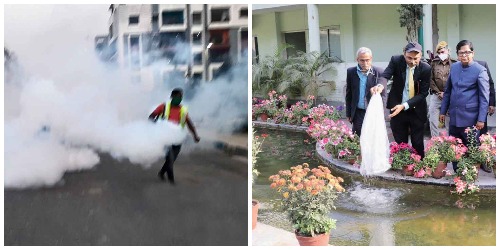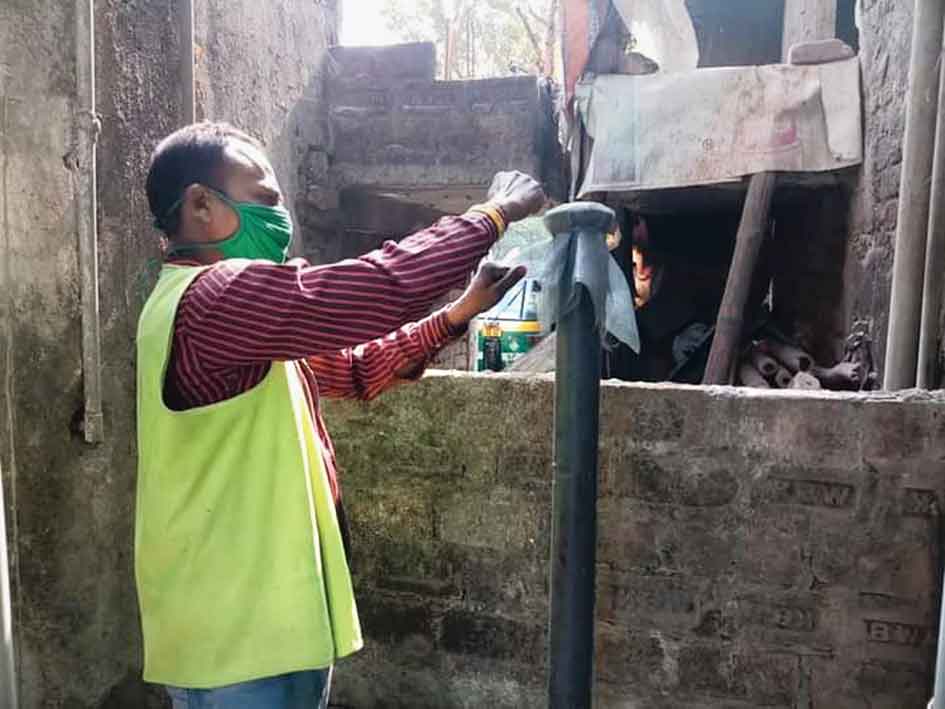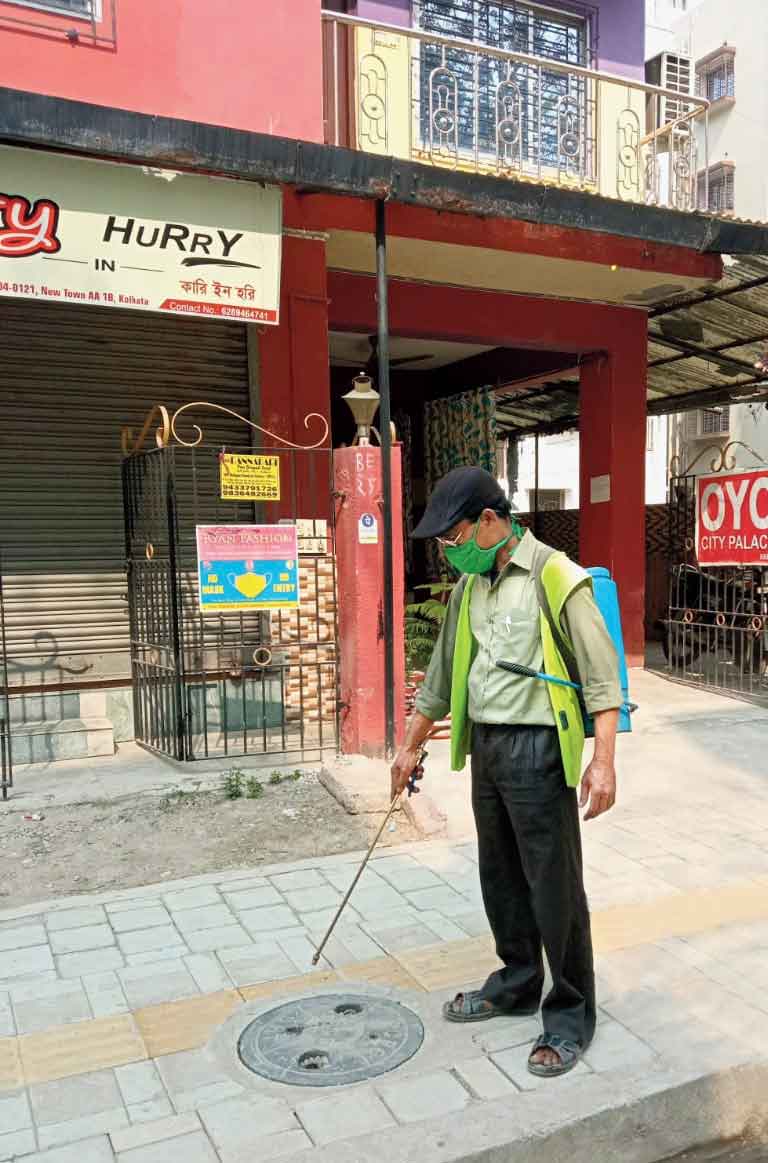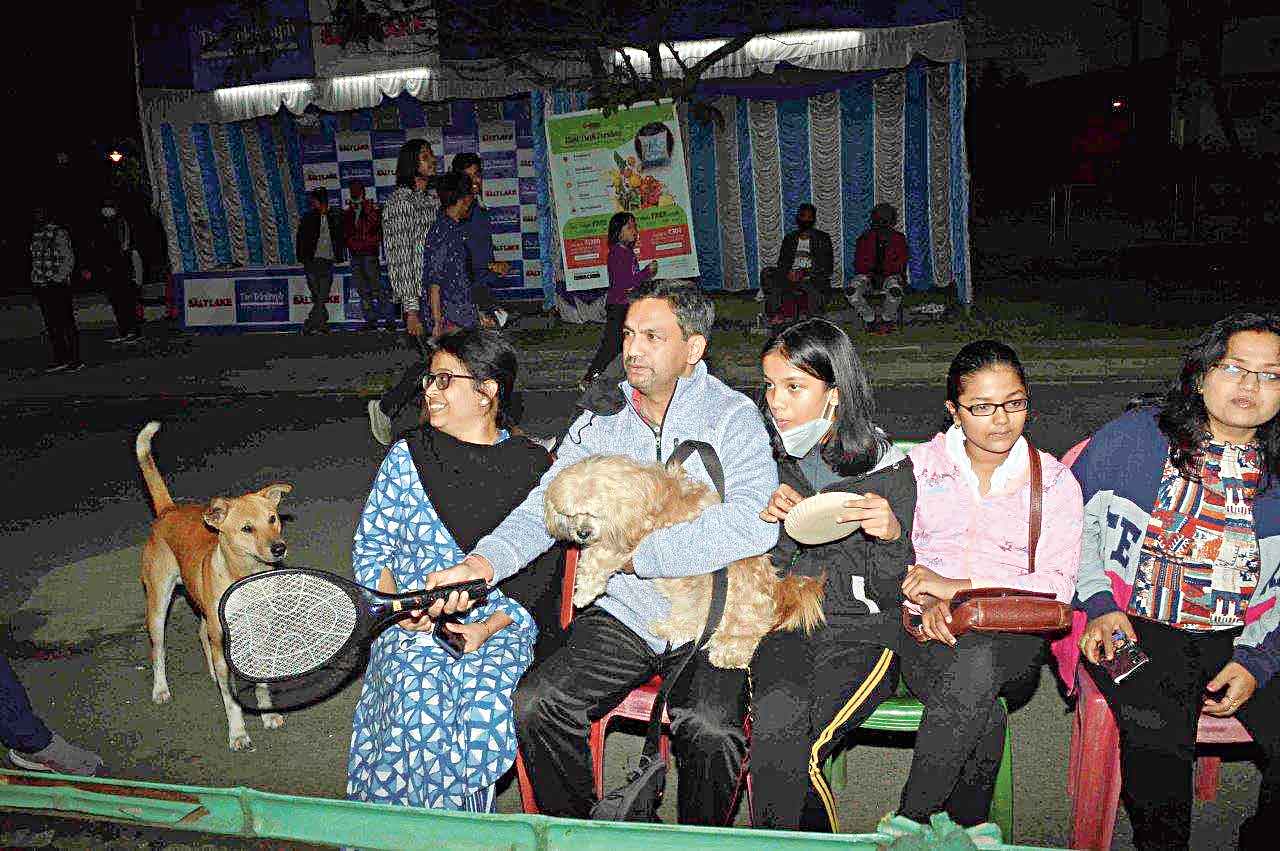New Town has imposing statues of owls and rhinos but residents with multiple swollen red dots all over their hands will claim that it’s mosquitoes that are the most formidable presence.
Salt Lake is no better. Mosquito nets have been pulled out of the loft and mosquito repellents are being sprayed generously all over households. Mosquitoes are back in the news as the pet peeve of the twin townships.
Nightmare in New Town
Residents of New Town’s AB, AD, AI, AL, CD, CE and DC have been crying hoarse about mosquitoes since the start of the year.
Mrinal Das, a Santoshpur resident, spends the winter every year in the two-storeyed building he has built in AL Block. “This year, things were so bad that we had to quit New Town after staying for just a month and half, a full month earlier than we had planned to. There is wild growth in our adjacent vacant plots. Sometimes the NKDA team used to come for fogging but that only drove the mosquitoes into the house. It was unbearable even at daytime,” said Das, who has recently retired from service.
Aniket Basak of AB Block has to shut all doors and windows of his house by 4pm. But that does not guarantee respite. “We have to keep the doors of the kitchen and the toilet closed too as they sneak in through the exhaust fan outlets there. In fact, going to the toilet at night is a torture as they lie in wait inside in a scourge.” He hopes that the situation would improve before summer. “It will be impossible to sleep with everything shut like this in the heat.”
Even if one steps outside, in full-sleeved dress, the mosquitoes target the part of the body that they find uncovered, residents say.
Whenever Uniworld City resident Sunil Khatri went down to watch the cricket tournament in their complex last weekend, he had to carry two things: mosquito repelling ointment and an electric racket to smack and electrocute the pests. “Without these it’s impossible to sit in the open in New Town,” he said.
Salt Lake on the edge
In Salt Lake, many blocks off the Kestopur canal, in sectors I and II, and off the Eastern Drainage Channel, in Sector III, are reeling under the onslaught of mosquitoes chasing them everywhere.
Samar Bhattacharya of EE Block has had to give up on his evening walks due to the menace. “They keep following and buzzing over our heads. It gets worse in the evenings and we don’t see any vector control teams around anymore,” said Bhattacharya.
“It’s never been as bad as this winter. This year we’ve had to take out mosquito nets,” said Bijoy Narayan Chaudhuri, vice-president of Jal Vayu Vihar Co-operative Housing Society. His complex lies on the entrance of Salt Lake from the Chingrihata side where construction work is on to build the Airport-New Garia Metro over the Eastern Drainage Canal.
“The labourers are dumping their materials in the canal and the water is stagnating, giving a free run to mosquitoes. The corporation workers are spraying insecticide and fogging but it’s not helping,” said Chaudhuri over phone, sitting inside a mosquito net in his apartment at 6pm.
Himadri Roy of Salt Lake’s AB Block is just as fed up. “Previously during morning walks we could see the Kestopur Canal water flowing but now it’s not only stagnant but also very low in depth. Mosquitoes are having a field day. We’ve given up urging the authorities to do something about it,” he said.

Fogging under way in New Town. (Right) Guppy fish being released in Kestopur Canal by NKDA officials on February 4 to destroy mosquito larvae
Challenges ahead
The administration has a difficult challenge on hand, warn entomologists. Culex quinquefasciatus, the species of mosquito mostly breeding in New Town, is tough to control, they say, as these can fly in any direction up to 5km from their breeding site in search of blood.
NKDA had contacted the Calcutta Municipal Corporation for help and chief vector control officer Debashis Biswas had come to give a two-hour presentation on January 19.
Speaking to The Telegraph Salt Lake, Biswas points out that Culex quinquefasciatus become prevalent from October to March. “It remains active till March and is a vector of filariasis. But filaria patients are almost non-existent in Calcutta, Salt Lake or New Town -- it needs to bite a human to transmit the worm and the disease -- so it is more of a nuisance.”
It breeds after the rainy season gets over when concentration of organic matter and organic ions increase in water. “Roadside gully pits, open surface drains, water accumulated in construction sites, abandoned water bodies and sides of canals where the water is stagnant are perfect breeding sites for this mosquito,” Biswas said.
The suggestions he made at the presentation included resection and flushing of canals. “The Kestopur canal needs to be flushed by the irrigation department by opening the Bagbazar sluice gate.”
He also suggested giving a guideline to promoters to keep the construction sites free of larvae. “They should buy knapsack sprayers and spray larvaecide. Every seven days, stagnant water should be pumped out as mosquitoes can breed there otherwise. In case that is not possible, two to two-and-half litres of kerosene should be sprayed for every 100sqm area, though this is not a long term solution,” he said.
He also spoke of which insecticide to spray in what kind of terrain and suggested the eco-friendly BTI powder to be sprayed in canals.
“Once the official letter comes from NKDA, our people will visit the spots to monitor how the vector control work is progressing in New Town.”.

The open mouth of a septic tank vent pipe being covered with nets to stop mosquitoes from flying in and breeding inside it in New Town
On war footing
“We are aware of the mosquito menace and are using a multi-pronged approach to tackle the problem,” said Debashis Sen, chairman of New Town Kolkata Development Authority (NKDA).
“In consultation with the fisheries department have released a lakh guppies in water bodies of the township including canals and those at Rabindra Tirtha and Eco Park,” Sen said. The fish eat up mosquito larva.
They have also identified a problem with the septic tanks in the fringe areas of the township and are trying to overcome it. “A septic tank has three chambers. A vent pipe comes out of the third chamber which has only water. There is a species of mosquito, Armigeres subalbatus, which breeds inside. If the open mouths can be wrapped with nets, the entry of mosquitoes into the tank and their breeding can be blocked,” explained Biswas.
Sen said they are now indeed getting the mouths of the tanks covered to control the menace. NKDA’s vector control team is also netting the surface of Kestopur Canal to trap mosquitoes underneath. “That way, even if they do breed in the water they will be unable to fly out of the region,” he said.
The intensity and frequency of fogging and larvicide spraying has been increased and recently, the campuses of West Bengal Judicial Academy and St Xavier’s University were sprayed and fogged too. Teams on boats are spraying along the banks of Bagjola and Keshtopur canals.
“At the same time I request residents not to allow water to stagnate. It’s winter but it rained the other day and such spells can lead to water accumulation. There can be no room for complacency,” said Sen.

Larvicide being sprayed in BE Block, New Town
Relief in sight
Alok Das, of CE Block, feels the NKDA’s actions have started to bear fruit. “Mosquitoes are still there but things seem to be improving over the last few days. The Kestopur canal is being cleared of water hyacinths and spraying of larvaecide is also being done. Earlier the cleaning was happening till the concrete box bridge near Loha Bridge. Now they are extending the activity till Aquatica. A net has been installed to guard the flotsam from drifting downstream into the New Town part of the canal,” said Das, who regularly goes over to monitor the canal-side work.
Ajit Jose was down with dengue in the second week of January. “The weather was pleasant so I used to go for evening walks. I must have got bitten then,” says the general manager of Ibis Hotel, who has recently moved into New Town. “Our hotel is fogged regularly but outside in the streets the mosquitoes were everywhere.” He too believes the situation has improved with the rise in temperature.
Spraying equipment defunct
If you’re impressed with the effort in New Town wait till you hear of the state in Salt Lake.
A Bidhannagar Municipal Corporation official said that many of their larvicide-spraying equipment had become defunct. “And we can’t call for new tenders till the elections,” he said.
“Salt Lake does not have open drains and it’s perplexing how there has been such a rise in the number of mosquitoes,” said Pranay Kumar Ray, member of the civic body’s board of administrators. “We will launch a drive to check all septic tanks.”
An official of the Nabadiganta Industrial Township Authority, which provides civic services to Sector V, said that they were spraying larvicide regularly but a dip in temperature had led to a spurt in mosquitoes.
On Wednesday, The Telegraph saw accumulated water thrown from pavement eateries on the sides of the roads in Sector V.

Sunil Khatri watches a cricket match in the open at Uniworld City, armed with an electric racket to swat away mosquitoes on Sunday. Basudeb Behera
Do it yoruself
Fed up of the lackadaisical attitude of the authorities, some Salt Lake residents have taken it upon themselves to tackle mosquitoes.
The AE (Part II) association has been spraying larvicide around the block for the past couple of months.
“The civic body’s vector control measures are not enough and since our block is adjacent to Kestopur Canal we are at the mercy of mosquitoes, whose population has gone up by several times,” said Tapas Sengupta the secretary of the AE Block Samaj Kalyan Sangha. “The authorities must release water into the canal by opening the lockgate of the Hooghly river at Baghbazar.”










